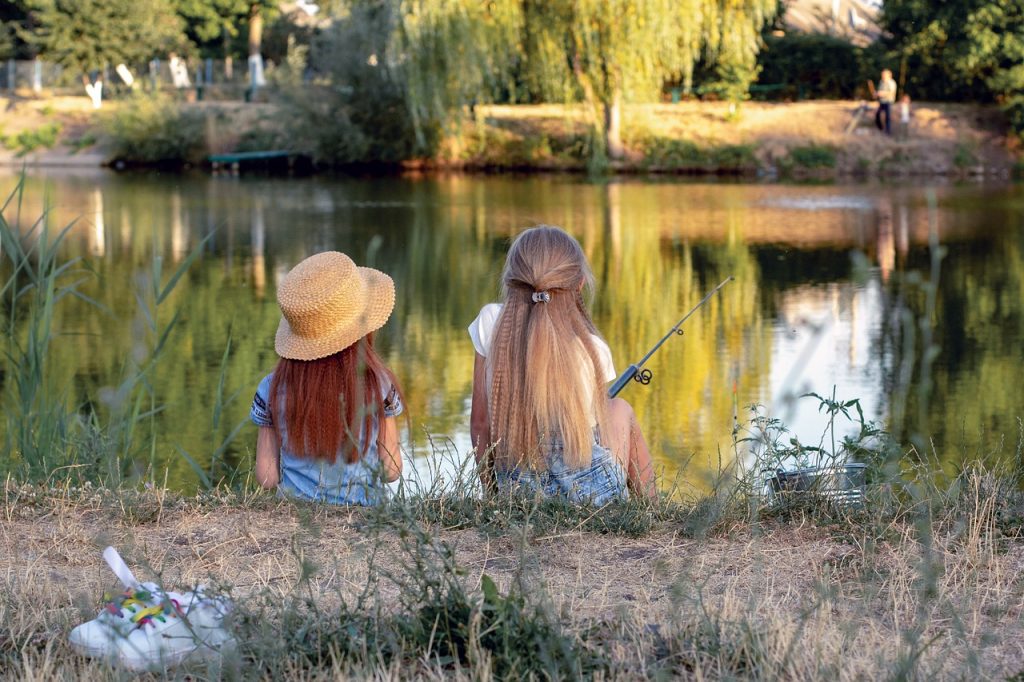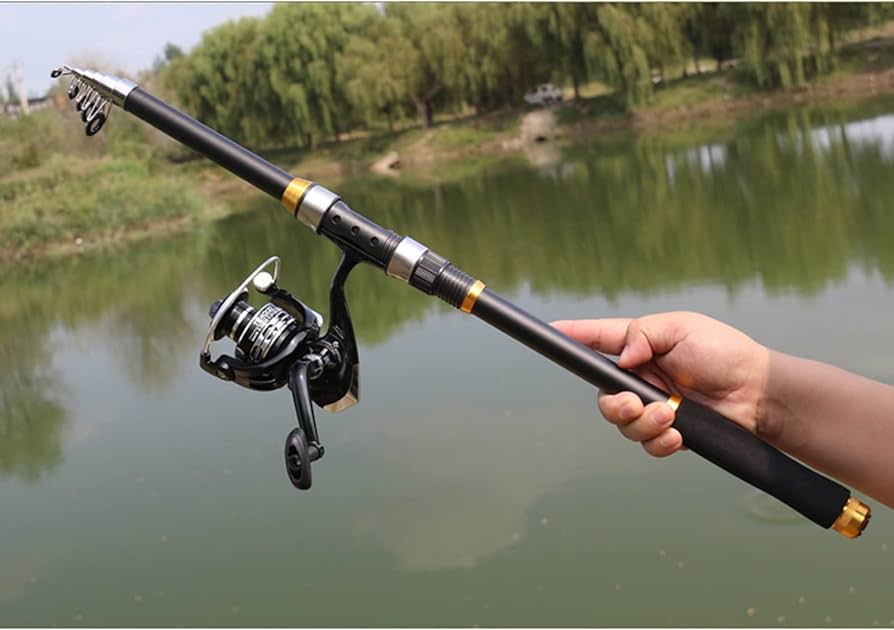(Photo from Stephen Edward | unsplash.com)
Introduction to Kayak Anchoring
In the dynamic realm of kayak fishing, maintaining a steady position amidst fluctuating currents and winds becomes an art form. The kayak anchor stands as a beacon, offering stability and precision during angling endeavors. As the fervor for kayak fishing sweeps across the globe, anchoring emerges as a pivotal skill, essential for both newcomers and seasoned anglers.
Navigating the intricacies of anchoring reveals a diverse landscape. Not every anchor boasts equal efficiency. Elements like weight, design, and seabed type play decisive roles in determining an anchor’s effectiveness. Anchoring transcends the realm of tools; it embodies strategy. Mastery over factors like wind direction, tidal fluctuations, and underwater terrains amplifies anchoring’s precision.
Safety remains a cornerstone. Improper anchoring techniques can culminate in accidents, from capsizing to unintended drifting. Such setbacks not only disrupt the fishing expedition but also pose threats to personal safety. Hence, an unwavering awareness of the surroundings, coupled with adept anchoring practices, becomes indispensable.
Choosing the Right Anchor for Your Kayak: A Deep Dive
Navigating the diverse seascape of anchor options can be daunting. Each anchor type carries its distinct advantages and limitations. Therefore, a meticulous evaluation of your kayak’s attributes is foundational. Factors such as the kayak’s dimensions, weight distribution, and design nuances are pivotal in dictating anchor compatibility.
Diving deeper, the intricacies of the fishing environment further refine anchor preferences. If your angling adventures frequently steer towards jagged underwater terrains, anchors endowed with robust grappling mechanisms become indispensable. These anchors promise enhanced grip, ensuring your kayak remains steadfast against challenging underwater topographies.
Conversely, the soft embrace of sandy or silty seabeds demands a different anchoring approach. Anchors characterized by expansive flukes offer optimal penetration and grip in such terrains, guaranteeing a secure hold. Matching anchor characteristics with the distinct features of your fishing spots amplifies anchoring efficacy and safety.
Moreover, anchoring isn’t a static endeavor. The dynamic nature of kayak fishing, with its diverse locales and changing conditions, necessitates adaptability. Curating a versatile anchor collection, tailored to the nuances of each fishing expedition, is pivotal. Such foresight ensures that regardless of the angling challenge at hand, you’re equipped with the optimal anchoring solution, fortifying stability and bolstering angling triumphs.
Mastering Advanced Anchoring Techniques: Elevating Your Kayak Fishing Game
While the foundational role of an anchor is to stabilize, its potential extends far beyond. For seasoned kayak anglers, delving into advanced anchoring techniques can be a game-changer, redefining the dynamics of fishing expeditions. Take, for instance, the “drift sock” or “sea anchor” approach. In vast water expanses or regions characterized by potent currents, these techniques become indispensable allies. By deploying drift socks, anglers can harness the power of natural forces, ensuring their kayak remains on course and poised for optimal fishing opportunities.
Venturing further into advanced anchoring, the concept of anchoring angles emerges as a pivotal strategy. This technique transcends traditional anchoring, focusing on the kayak’s orientation concerning predominant forces like wind or currents. Subtle adjustments, such as aligning the kayak slightly upwind or positioning it against the current flow, can profoundly influence bait presentation dynamics. Such meticulous positioning not only enhances the lure’s natural allure but also significantly amplifies the probability of enticing elusive fish species.
Furthermore, as the landscape of kayak fishing undergoes transformative shifts, it’s witnessing an influx of technological integrations within anchoring methodologies. The advent of “power-pole” systems or the incorporation of electric anchor winches exemplifies this fusion of tradition with innovation. While these modern solutions promise enhanced convenience and efficiency, their seamless integration into fishing routines mandates a profound understanding. As with all advancements, a blend of knowledge, practice, and adaptability ensures that anglers can harness technology’s potential while staying rooted in the timeless essence of kayak fishing.
Maintenance and Care: Anchoring the Future of Your Kayak Fishing Gear
An anchor, a fundamental tool in the realm of kayak fishing, requires meticulous care. For instance, after each fishing expedition, rinsing off accumulated salt or debris becomes crucial. This simple act not only maintains the anchor’s appearance but also combats corrosion, a persistent threat.
Moreover, in the intricate world of anchoring, moisture poses significant risks. Hence, providing the anchor with a dry storage environment is paramount. Such practices not only prolong its lifespan but also ensure consistent performance on future outings.
Delving deeper into preservation techniques, regular inspections emerge as a cornerstone. Specifically, components like flukes and shackles demand attention. Identifying potential wear or damage early on can prevent more extensive problems down the line. Consequently, this proactive approach guarantees uninterrupted fishing adventures.
Furthermore, the journey of anchoring extends beyond the waters. When transitioning to land, secure storage during transit becomes essential. Anglers traversing varied terrains and conditions understand this. Thus, safeguarding the anchor against potential damages from jolts or movements is a testament to an angler’s foresight.
Environmental Considerations: Anchoring with Care
(Photo from Harrison Fitts | pexels.com)
In the dynamic realm of kayak fishing, anchoring stands as a linchpin. Yet, the act of anchoring demands more than just precision—it requires environmental consciousness. For instance, anchoring carelessly on fragile marine ecosystems, such as vibrant coral reefs or delicate seagrass beds, poses threats beyond immediate damage.
Moreover, recognizing the broader ecological impact is crucial. Therefore, aligning with local regulations and anchoring guidelines becomes a non-negotiable imperative. Such adherence ensures not just the longevity of fishing grounds but also maintains the delicate balance of underwater biodiversity.
Transitioning from anchoring to the retrieval process, another layer of responsibility unfolds. Carefully extracting anchors, and minimizing any undue seabed disturbances, stands as an act of respect towards marine habitats. Additionally, as an advocate for sustainable fishing, spotting and responsibly disposing of marine litter becomes a duty. This commitment to environmental mindfulness solidifies an angler’s legacy as a protector of aquatic ecosystems.
Safety Measures: Anchoring Without Compromise
Navigating the waters of kayak fishing intertwines thrill with responsibility. Safety, in this dynamic dance, emerges as paramount. Anchoring, a tool that anchors your position, paradoxically can pose threats if not wielded with care. Especially in the vast expanses of deeper waters, the need for heightened vigilance amplifies.
Furthermore, buoyancy becomes more than just a concept—it’s a lifeline. Ensuring kayaks are buoyant enough, especially when anchoring in deeper terrains, can be a game-changer. Alongside, integrating visual aids like bright buoys stands pivotal. These not only accentuate your position but also serve as beacons, minimizing the peril of potential collisions.
Best practices are akin to a compass—guiding safely amidst challenges. Steering clear of bustling boat traffic or areas with aggressive currents becomes a foundational tenet. Additionally, equipping kayaks with quick-release systems serves as an added layer of security, offering peace of mind during unforeseen adversities.
The Role of Technology: Modern Solutions in Anchoring
In kayak fishing, technology stands as a beacon of innovation. Today’s advancements not only elevate the angling experience but also redefine foundational practices. Anchoring, a centuries-old practice, now witnesses transformative solutions that marry tradition with modernity.
Delving into the heart of technological evolution, GPS-guided anchors emerge as trailblazers. These anchors, equipped with state-of-the-art sensors, seamlessly adapt to shifting winds, tides, and currents. Such precision, while commendable, underscores the importance of familiarizing oneself with the nuances of these systems. A tool is only as good as its master’s understanding.
However, as the saying goes, “old habits die hard.” Traditional anchoring techniques, steeped in time-honored practices, continue to hold their ground. The art of knot tying, understanding the ebb and flow of anchor physics, and reading the waters remain invaluable. In essence, while technology paves new paths, the foundational wisdom of anchoring remains a compass guiding the kayak fishing journey.
Community and Learning: Anchoring Workshops and Seminars
In the vibrant tapestry of kayak fishing, the essence of community and shared wisdom shines brightly. The collective pursuit of mastery draws enthusiasts together, creating spaces where expertise is exchanged and bonds are forged. Anchoring, being a cornerstone of this discipline, often becomes a focal point of these gatherings.
Venturing into specialized workshops or seminars is akin to embarking on a treasure hunt. Here, seasoned anglers, with years of experience riding the waves, unravel the intricacies of anchoring. Through demonstrations, discussions, and hands-on sessions, participants glean insights that might otherwise remain obscured. Such immersive experiences not only refine individual techniques but also foster a spirit of collaboration and mutual respect.
Furthermore, the journey of learning is an endless odyssey. Beyond structured workshops, the realm of kayak fishing offers a plethora of resources waiting to be explored. Diving deep into curated articles, engaging in peer-led discussions, or seeking mentorship from seasoned veterans, each avenue enriches the angling journey. In this dynamic ecosystem, the thirst for knowledge becomes the compass guiding every paddle stroke and anchor drop.
Anchoring’s Enduring Legacy in Kayak Fishing
In the ever-changing landscape of kayak fishing, certain elements stand as timeless pillars. Among them, anchoring emerges not just as a tool but as a symbol—a testament to the sport’s rich history and promising future. Through epochs of technological advancements and shifts in angling techniques, the essence of anchoring remains undiminished.
Reflecting on its role, anchoring is more than a means to an end; it’s a bridge connecting generations of anglers. It encapsulates the essence of stability in a sport that dances with nature’s whims. As the sun sets on countless fishing expeditions, it’s the anchor that holds stories, memories, and aspirations steady.
In this vast expanse of waters and possibilities, anchoring serves as a beacon. It reminds anglers of their roots, guiding them towards promising horizons while grounding them in cherished traditions. As the ripples of time continue to shape kayak fishing, let anchoring’s enduring legacy be celebrated—a tribute to the past, a companion in the present, and a promise for the future.
FAQs: Understanding Anchoring’s Role in Kayak Fishing
1. What is the primary role of anchoring in kayak fishing?
- Anchoring in kayak fishing primarily serves to stabilize the kayak, ensuring anglers maintain their position amidst varying currents and winds. It also enhances precision during angling pursuits.
2. How do I choose the right anchor for my kayak?
- Start by assessing your kayak’s specifications such as size, weight, and design. Consider your preferred fishing environments, whether they are rocky, sandy, or muddy. Matching the anchor type to these factors ensures optimal performance.
3. Are there advanced anchoring techniques I should be aware of?
- Yes, techniques like the “drift sock” or “sea anchor” method are especially beneficial in areas with strong currents or winds. These techniques can significantly enhance stability and bait presentation.
4. How can I ensure my anchor lasts long?
- Proper maintenance is key. After each use, rinse off salt or debris, store the anchor in a dry place to prevent corrosion, and periodically inspect its components for wear or damage.
5. Why is environmental consideration crucial when anchoring?
- Anchoring in sensitive marine habitats, such as coral reefs or seagrass beds, can cause irreparable damage. It’s essential to anchor responsibly, adhering to local regulations and avoiding disturbances to marine ecosystems.
Check out or latest blog on Kayak Trout Fishing: A Majestic Pursuit


